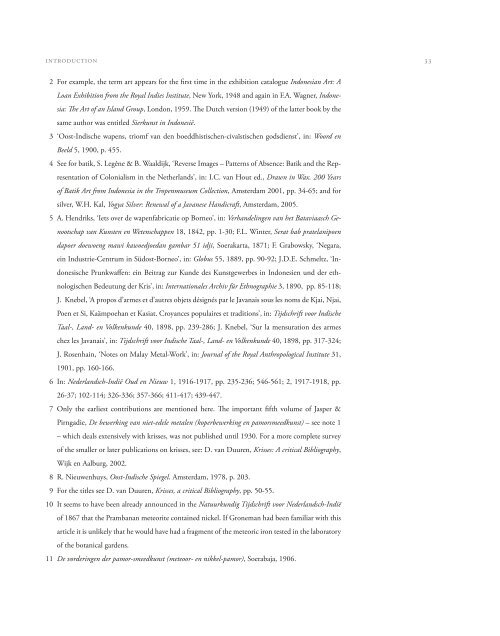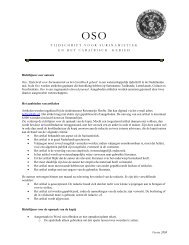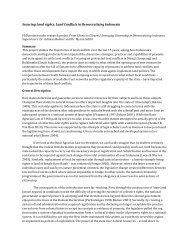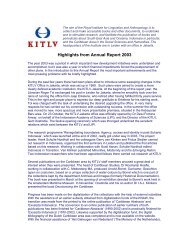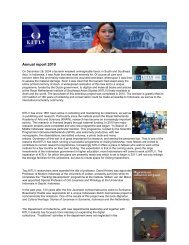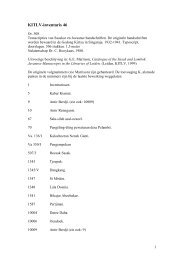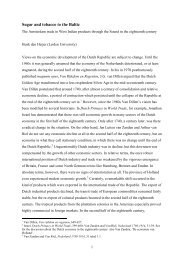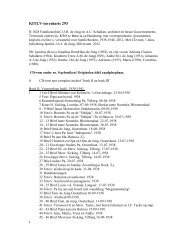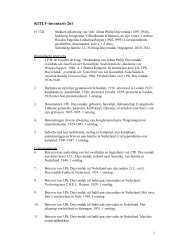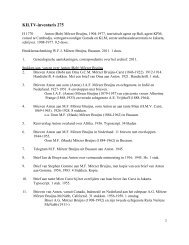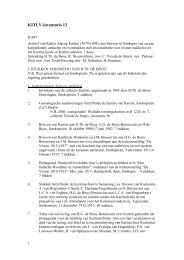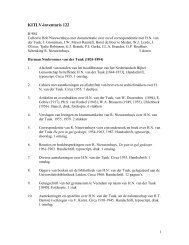Create successful ePaper yourself
Turn your PDF publications into a flip-book with our unique Google optimized e-Paper software.
introduction<br />
33<br />
2 For example, the term art appears for the first time in the exhibition catalogue Indonesian Art: A<br />
Loan Exhibition from the Royal Indies Institute, New York, 1948 and again in F.A. Wagner, Indonesia:<br />
The Art of an Island Group, London, 1959. The Dutch version (1949) of the latter book by the<br />
same author was entitled Sierkunst in Indonesië.<br />
3 ‘Oost-Indische wapens, triomf van den boeddhistischen-civaïstischen godsdienst’, in: Woord en<br />
Beeld 5, 1900, p. 455.<br />
4 See for batik, S. Legêne & B. Waaldijk, ‘Reverse Images – Patterns of Absence: Batik and the Representation<br />
of Colonialism in the Netherlands’, in: I.C. van Hout ed., Drawn in Wax. 200 Years<br />
of Batik Art from Indonesia in the Tropenmuseum Collection, Amsterdam 2001, pp. 34-65; and for<br />
silver, W.H. Kal, Yogya Silver: Renewal of a Javanese Handicraft, Amsterdam, 2005.<br />
5 A. Hendriks, ‘Iets over de wapenfabricatie op Borneo’, in: Verhandelingen van het Bataviaasch Genootschap<br />
van Kunsten en Wetenschappen 18, 1842, pp. 1-30; F.L. Winter, Serat bab pratelanipoen<br />
dapoer doewoeng mawi kawoedjoedan gambar 51 idji, Soerakarta, 1871; F. Grabowsky, ‘Negara,<br />
ein Industrie-Centrum in Südost-Borneo’, in: Globus 55, 1889, pp. 90-92; J.D.E. Schmeltz, ‘Indonesische<br />
Prunkwaffen: ein Beitrag zur Kunde des Kunstgewerbes in Indonesien und der ethnologischen<br />
Bedeutung der Kris’, in: Internationales Archiv für Ethnographie 3, 1890, pp. 85-118;<br />
J. Knebel, ‘A propos d’armes et d’autres objets désignés par le Javanais sous les noms de Kjai, Njai,<br />
Poen et Si, Kaämpoehan et Kasiat. Croyances populaires et traditions’, in: Tijdschrift voor Indische<br />
Taal-, Land- en Volkenkunde 40, 1898, pp. 239-286; J. Knebel, ‘Sur la mensuration des armes<br />
chez les Javanais’, in: Tijdschrift voor Indische Taal-, Land- en Volkenkunde 40, 1898, pp. 317-324;<br />
J. Rosenhain, ‘Notes on Malay Metal-Work’, in: Journal of the Royal Anthropological Institute 31,<br />
1901, pp. 160-166.<br />
6 In: Nederlandsch-Indië Oud en Nieuw 1, 1916-1917, pp. 235-236; 546-561; 2, 1917-1918, pp.<br />
26-37; 102-114; 326-336; 357-366; 411-417; 439-447.<br />
7 Only the earliest contributions are mentioned here. The important fifth volume of Jasper &<br />
Pirngadie, De bewerking van niet-edele metalen (koperbewerking en pamorsmeedkunst) – see note 1<br />
– which deals extensively with krisses, was not published until 1930. For a more complete survey<br />
of the smaller or later publications on krisses, see: D. van Duuren, Krisses: A critical Bibliography,<br />
Wijk en Aalburg, 2002.<br />
8 R. Nieuwenhuys, Oost-Indische Spiegel. Amsterdam, 1978, p. 203.<br />
9 For the titles see D. van Duuren, Krisses, a critical Bibliography, pp. 50-55.<br />
10 It seems to have been already announced in the Natuurkundig Tijdschrift voor Nederlandsch-Indië<br />
of 1867 that the Prambanan meteorite contained nickel. If Groneman had been familiar with this<br />
article it is unlikely that he would have had a fragment of the meteoric iron tested in the laboratory<br />
of the botanical gardens.<br />
11 De vorderingen der pamor-smeedkunst (meteoor- en nikkel-pamor), Soerabaja, 1906.


